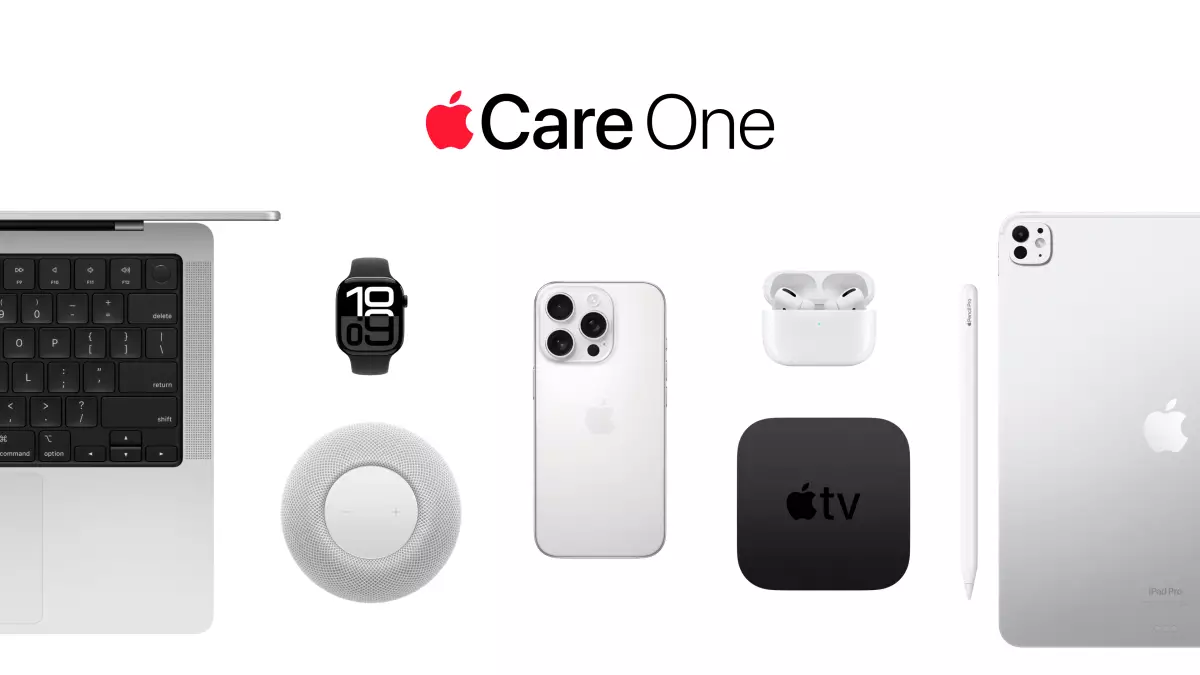Apple’s latest innovation, AppleCare One, marks a significant shift in how consumers safeguard their technology investments. Gone are the days of juggling multiple plans for different devices; instead, Apple now offers a sleek, all-in-one subscription that promises comprehensive coverage for up to three devices at $19.99 per month. This move is not merely about convenience—it signals Apple’s recognition of the modern consumer’s desire for simplicity and value. By allowing users to bundle protection across iPhones, iPads, and Apple Watches, Apple is providing an elegant solution that addresses the fragmentation that historically plagued device coverage.
What stands out boldly in AppleCare One is the inclusiveness of its features. It includes unlimited repairs for accidents like drops and spills, round-the-clock support from Apple’s skilled technicians, and battery coverage—all cornerstone benefits that demonstrate Apple’s commitment to quality service. The addition of theft and loss protection for multiple devices expands this offering into an even more attractive package, especially for users who rely heavily on their wearables and tablets for daily tasks. This holistic approach not only enhances user convenience but elevates the overall value proposition. Apple’s strategic placement of this plan as an accessible, ongoing subscription underscores its focus on fostering ongoing customer loyalty rather than one-time purchases.
Rethinking Device Ownership and Protection Flexibility
One of the most groundbreaking aspects of AppleCare One is its unprecedented flexibility. Previously, consumers faced the cumbersome process of purchasing separate AppleCare+ plans for each device, often leading to higher costs and administrative headaches. Now, the company’s single, bundled plan allows users to add devices already in their possession, even those up to four years old, provided they pass a diagnostic check. This feature recognizes that device aging is inevitable and that consumers deserve a simple way to extend their protections without logistical hurdles or exorbitant costs.
However, this shift also signals Apple’s strategic intent to retain existing customers by making coverage more accessible and adaptable. The diagnostic process, whether at an Apple Store or via a compatible device, ensures that only devices in good condition are added, arguably safeguarding Apple’s service standards. What is compelling here is Apple’s equitable approach: the flat-rate pricing remains unchanged irrespective of the number of devices, which can lead to sizable savings. Imagine a family with multiple Apple gadgets—bundling coverage consolidates expenses and simplifies renewal processes, making it easier for users to stay protected without being overwhelmed by multiple plans.
Challenging Traditional Paradigms of Tech Protection
While AppleCare One is undoubtedly a step forward, it also raises questions about its long-term implications on the consumer electronics insurance landscape. By offering a tightly integrated, affordable subscription model, Apple pushes competitors to reconsider their own offerings, possibly sparking a more consumer-centric approach industry-wide. Yet, it also challenges users’ perceptions: is this truly comprehensive protection, or is Apple subtly nudging consumers to spend more on their brand ecosystem?
Critics might argue that the flat fee, while attractive, could mask underlying costs associated with repairs, especially in the case of more extensive damage. Nonetheless, for many users, the peace of mind that comes with knowing their devices are protected against spills, drops, theft, and loss is invaluable. Apple’s move to make device coverage more flexible and affordable demonstrates a nuanced understanding of consumer behavior—many users prefer a predictable, transparent plan over the complexities of individual plans with varying coverage limits.
Ultimately, AppleCare One doesn’t just represent a merger of protection services; it encapsulates a broader shift toward unified digital ecosystems and customer-centric financial models. As the landscape of device ownership continues to evolve, Apple’s bold strategy could very well redefine how we think about device security—more integrated, more adaptable, and ultimately more empowering.

